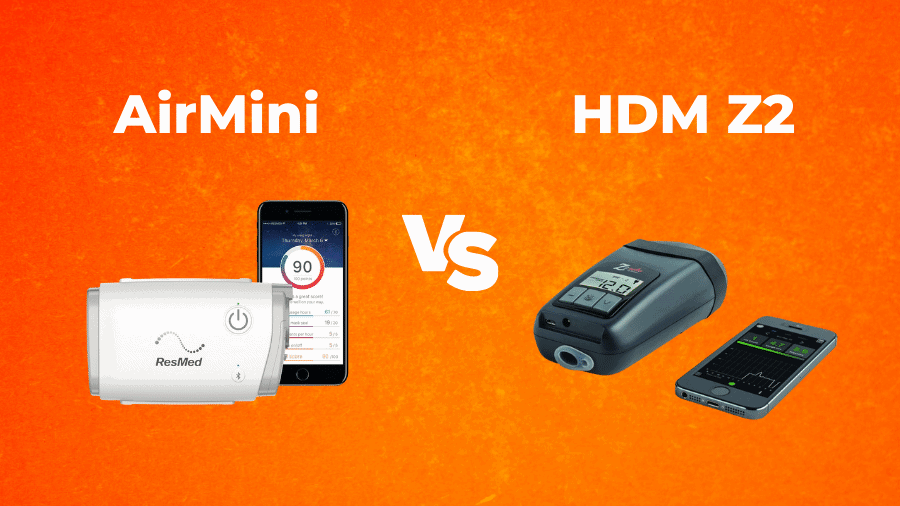Both the ResMed AirMini and the Breas Z2 Auto are popular travel CPAPs known for their compact size and advanced technology. However, they have important differences that buyers should be aware of. In this AirMini vs Breas Z2 review, we dive deep into these differences and explain why they matter.
First, we’d like to give you a quick breakdown of the features of both machines in the table below. Then we’ll discuss the similarities, followed by the differences between the ResMed AirMini and the Breas Z2 Auto in detail.
Before we dive deeper into the two travel CPAP machines, we’d like to point out the most important difference: the AirMini requires a smartphone for setting adjustments while the Z2 Auto does not. This is because the AirMini does not have a display.
Simply put, if using a mobile app to adjust machine settings sounds like too much of a hassle, the AirMini may not be the best fit.
In This Review:
- ResMed AirMini vs Breas Z2 Auto Overview
- ResMed AirMini vs Breas Z2 Auto: Similarities
- ResMed AirMini vs Breas Z2 Auto: Differences
- The Takeaway: AirMini vs Breas Z2 Auto
ResMed AirMini vs Breas Z2 Auto Overview
| ResMed AirMini | Breas Z2 Auto | |
| Release Date | May 2017 | March 2019 |
| Dimensions (Size) | 5.4 x 3.3 x 2.1 inches | 6.48 x 3.30 x 2.02 inches |
| Footprint | 17.82 sq inches | 21.39 sq inches |
| Weight | 10.6 oz | 10.4 oz |
| Humidification | Proprietary HumidX & HumidX Plus Heat Moisture Exchanger (HME) | Universal Heat Moisture Exchanger (HME) |
| Quietness (Noise level) | 30 dBA | 26 dBA |
| Operating Pressure Range | 4-20 cm H2O | 4-20 cm H2O |
| Operation Mode | CPAP, APAP, APAP For Her | CPAP, APAP |
| Power | 100-240V, 50-60Hz | 100-240V, 50-60Hz |
| Integrated Battery | No | Yes, Optional PowerShell Module w/ Extended Battery |
| Ramp Time | 0-45 minutes (also features AutoRamp) | 0-45 minutes |
| Mobile Device App | AirMini | Nitelog |
| Altitude Adjustment | Automatic up to 8500 Feet (2591 m) | Automatic up to 8000 Feet (2438 m) |
| Bluetooth | Yes | Yes |
| Leak Compensation | Yes | Yes |
| Supports Remote Monitoring | Yes | No |
| Compatible with All Masks | No | Yes |
| Expiratory Pressure Relief | Yes (EPR) | Yes (Z-Breathe) |
| Data Access | App | App, PC software |
ResMed AirMini vs Breas Z2 Auto: Similarities
Size and Weight
In terms of physical characteristics, both machines weigh just over 10 oz and are roughly the size of a smartphone, albeit a large one. Both machines can easily fit inside an overnight bag, backpack and tote bag/large purse with ample room left for a mask, hose and some extra mask parts.
In fact, the AirMini held the title of the world’s smallest travel CPAP until the advent of the Transcend Micro, which is now the tiniest CPAP on the planet. If finding the smallest travel machine is your top priority, then you’ll want to see how the AirMini compares to the Transcend Micro.
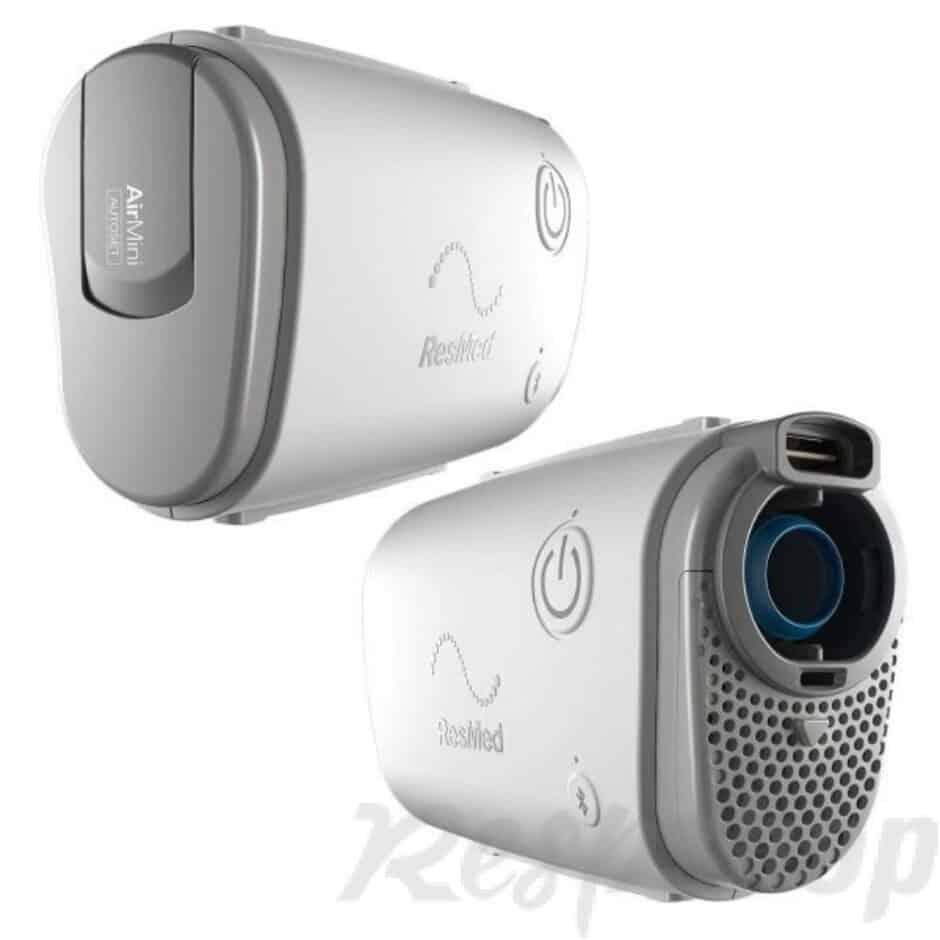
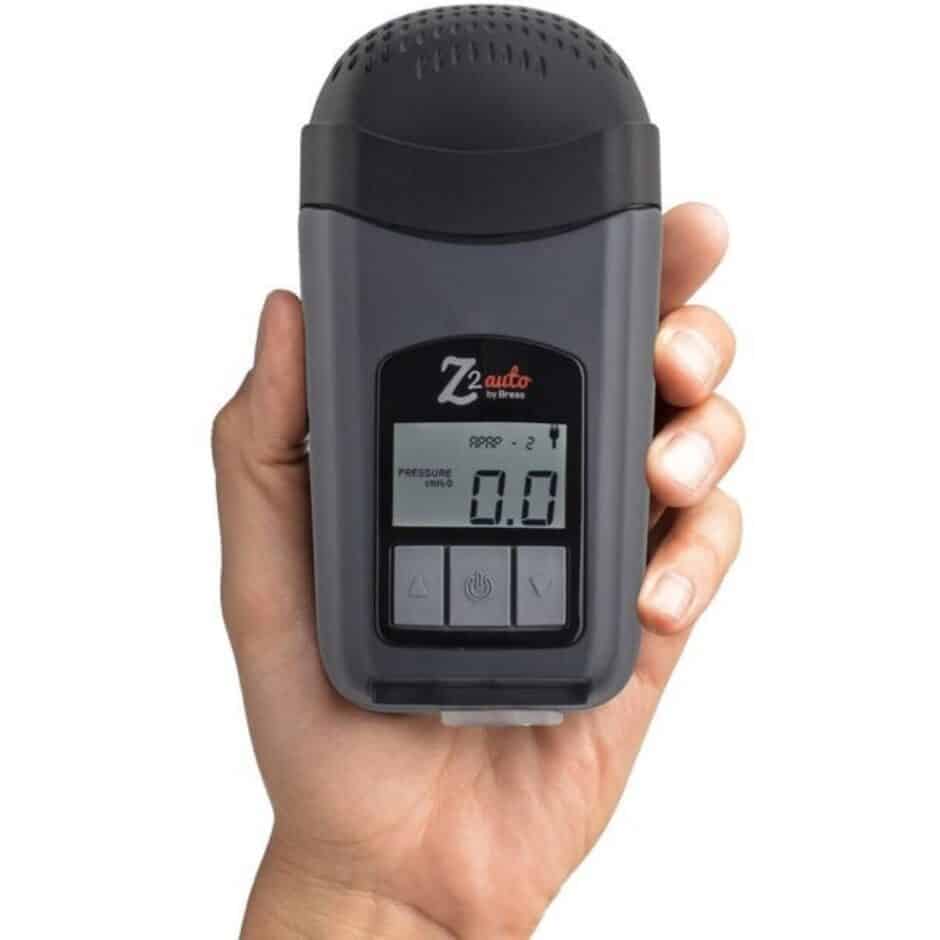
Humidification
Both the AirMini and Z2 Auto offer waterless humidification using heat moisture exchangers (HMEs). HMEs capture the heat and moisture from your exhaled breath and release them during your next breath to heat and humidify the air. HMEs are a great way to offer humidification without adding too much extra bulk.
It’s important to note that while both the AirMini and Z2 use HMEs for humidification, their HME setups are very different. We’ll elaborate on this when we discuss the differences between the two travel units.
Comfort Features
Both machines offer the following comfort features:
- Ramp
- Pressure Relief
Ramp allows the machine to start you off on a pressure that’s lower than your prescribed therapy pressure. This lower pressure, called Ramp Pressure, then increases over a set amount of time (called Ramp Time) until it reaches the prescribed CPAP pressure. If you’re on auto CPAP mode, Ramp Pressure will increase over the set Ramp Time to your minimum pressure setting. Ramp makes falling asleep much easier and we highly recommend using this feature if you’re new to CPAP.
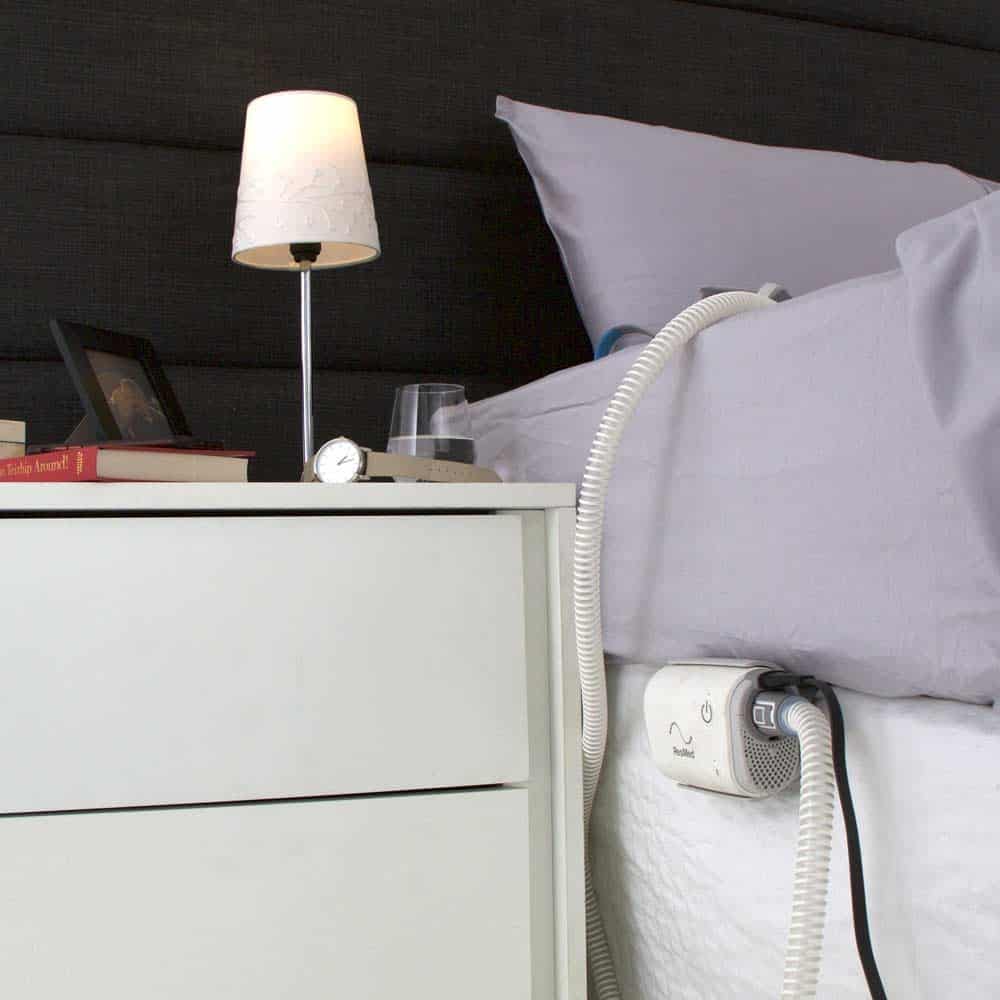
Both the AirMini and Breas Z2 Auto allow users to set Ramp Time in 5 minute increments up to 45 minutes. However, the AirMini has an additional AutoRamp feature that is not available on the Z2. AutoRamp is an upgraded Ramp feature that increases Ramp Pressure after the machine determines you’ve fallen asleep.
Pressure relief—called EPR on the AirMini and Z-Breathe on the Z2—lowers pressure when you breathe out. Like Ramp, this feature helps new CPAP users acclimate to therapy. Both travel machines allow you to adjust the pressure relief level from 1 to 3. Each level corresponds to the amount of pressure decrease during exhalation.
Bluetooth Connectivity & Mobile App
Both the AirMini and Z2 Auto feature Bluetooth connectivity so you can pair the CPAP to its respective app. For the AirMini, that would be the AirMini app and if you’re using the Breas Z2 Auto, it’s the Nitelog app. While both apps display your usage hours, AHI, and information on your mask seal, only the Nitelog app lets you generate a compliance report. You can download the report or email it to your doctor or insurance provider directly from the app.
Other Similarities
Both machines are dual voltage (100-240V, 50-60Hz) and can be used in any country without a converter or transformer. Note that you’ll need a travel plug adapter if you’re traveling to a country that doesn’t use two-pronged outlets.
Both units operate at a pressure range of 4-20 cm H2O and also automatically adjust for altitude (up to 8,500 ft for AirMini and up to 8,000 ft for Z2).
ResMed AirMini vs Breas Z2 Auto: Differences
Noise Level
Perhaps because the Z2 is a newer machine (it is 2 years younger than the AirMini), its technology has allowed for quieter performance. While the AirMini is not exactly loud at 30 decibels, the Z2 operates at 26 decibels, making it the quietest travel CPAP even with the newest Transcend Micro factored in. The Z2 also comes with the Q-Lite in-line Muffler which helps decrease the sound of airflow through the mask and hose.
Integrated Battery
If you’re looking to take your travel CPAP camping or anywhere without a power source, battery options are available for both the AirMini and the Z2. However, only the Z2 offers an integrated battery unit.
Breas offers an optional Powershell Battery Module for the Z2 and while it is an “integrated” module, it does not disappear in the body of the Z2. Instead, it is a battery unit that weighs an additional 15.5 ounces and is 8.25 x 4 x 3.25 inches in size. This Powershell module comes with an extended life battery that offers over 8 hours of runtime on a pressure of 20 cm H2O.
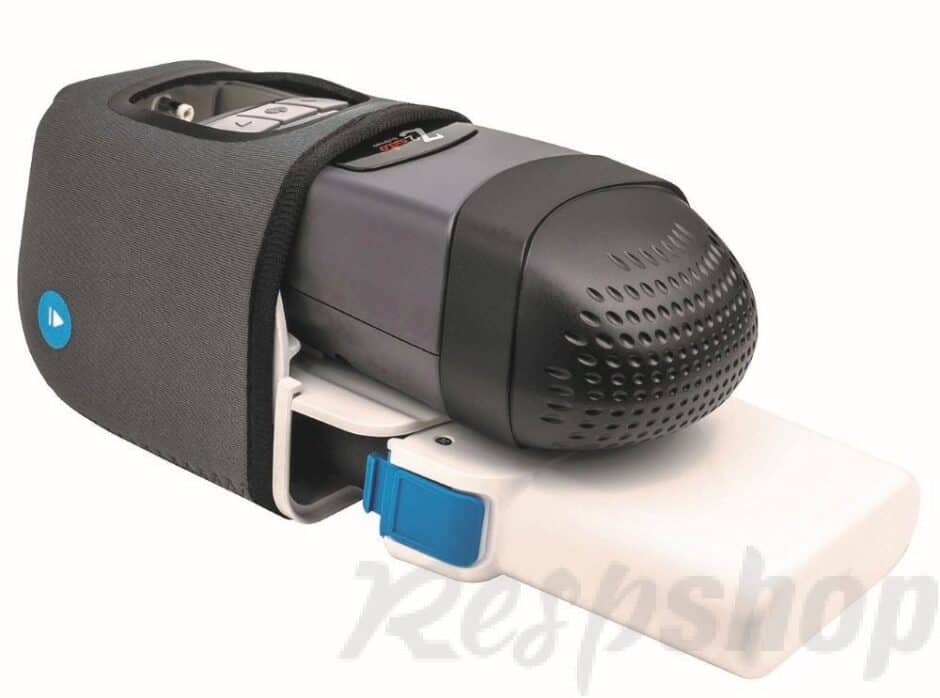
Conversely, the AirMini can be powered by a third-party CPAP battery, such as the Medistrom Pilot-24-Lite Lithium Ion Battery. No integrated battery exists for the AirMini. Battery packs for each of the machines come out to about the same price ($350 to $450), although you may find the “integrated” unit for the Z2 more elegant.
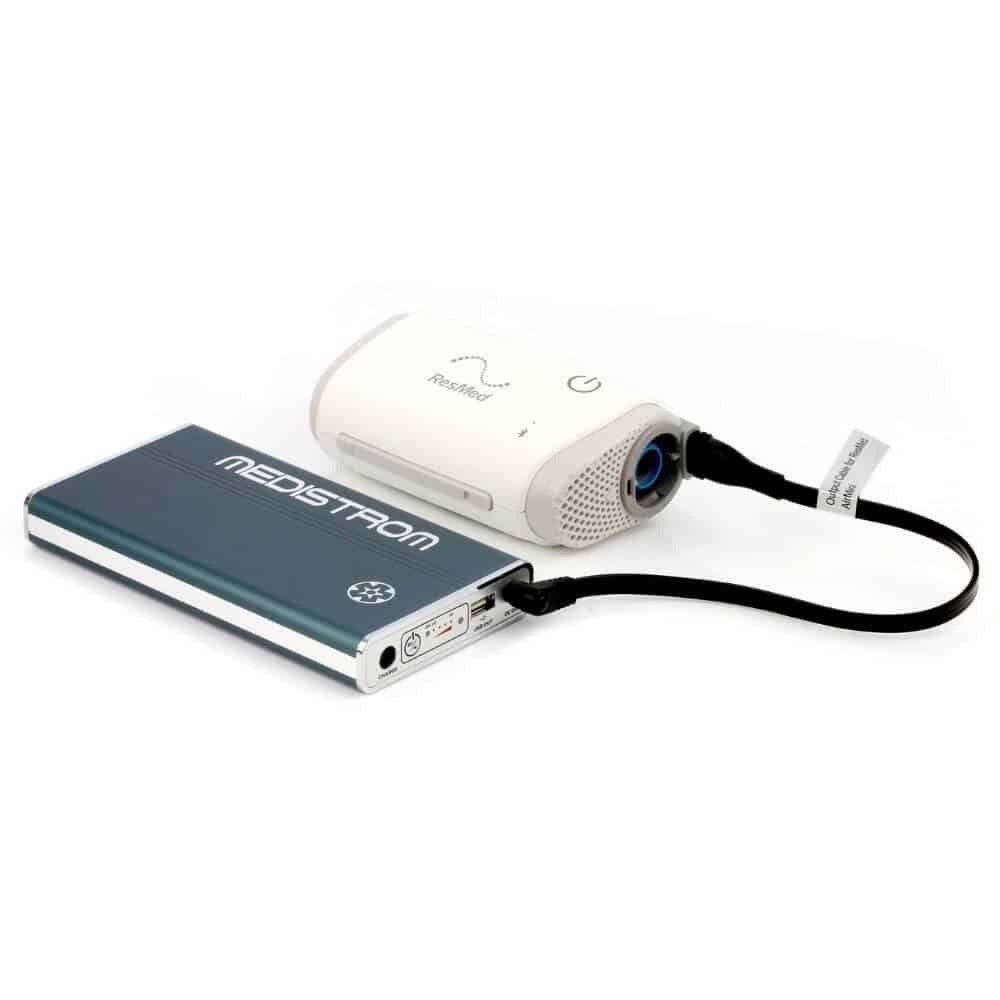
Heat Moisture Exchanger Setup
Earlier on, we mentioned both the AirMini and Z2 Auto use HMEs for humidification but differ in their HME setup. Now we’ll explore this in detail as it is a bit complicated and related to CPAP mask compatibility.
The AirMini uses proprietary HMEs called HumidX/HumidX Plus capsules. These HMEs are shaped like circular discs and can only be connected to the AirMini via AirMini specific ResMed CPAP masks. In other words, if you’re not using one of the AirMini specific masks, you can’t use the HumidX and HumidX Plus HME capsules.
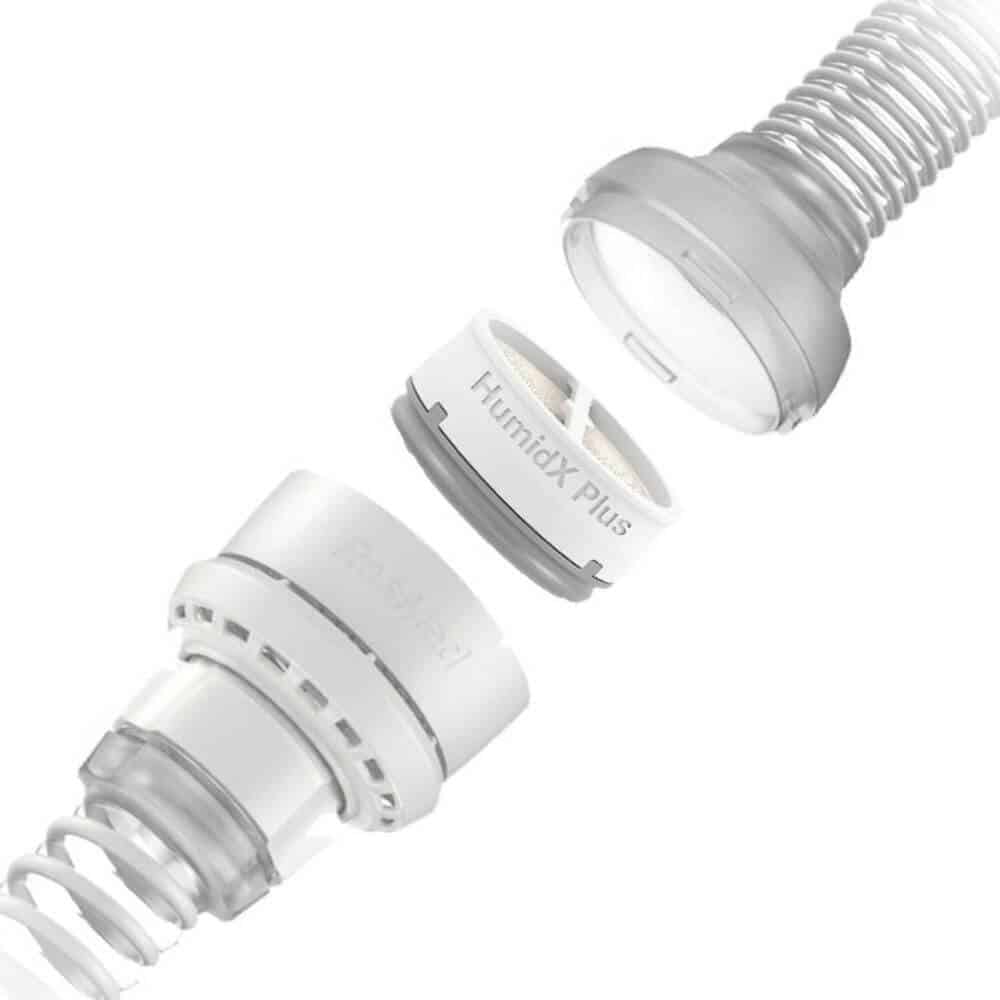
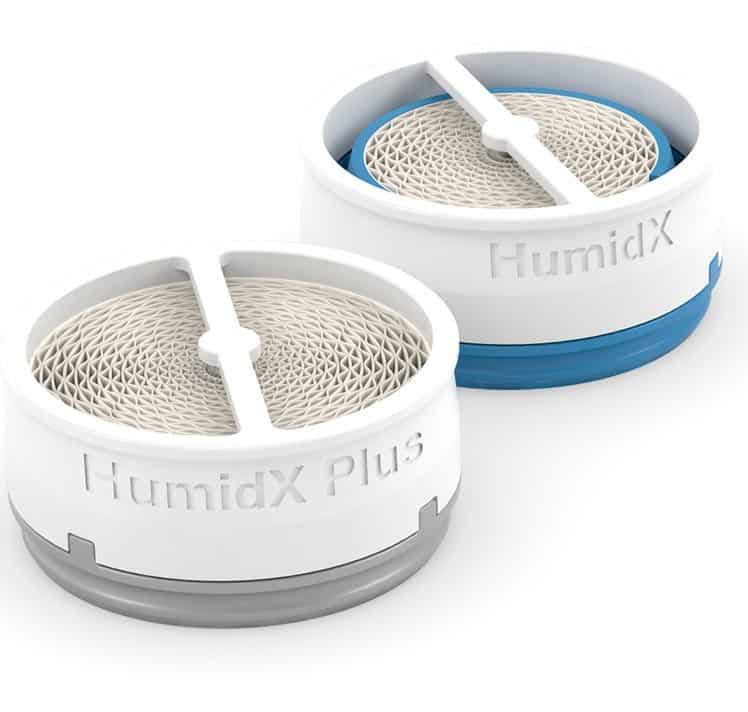
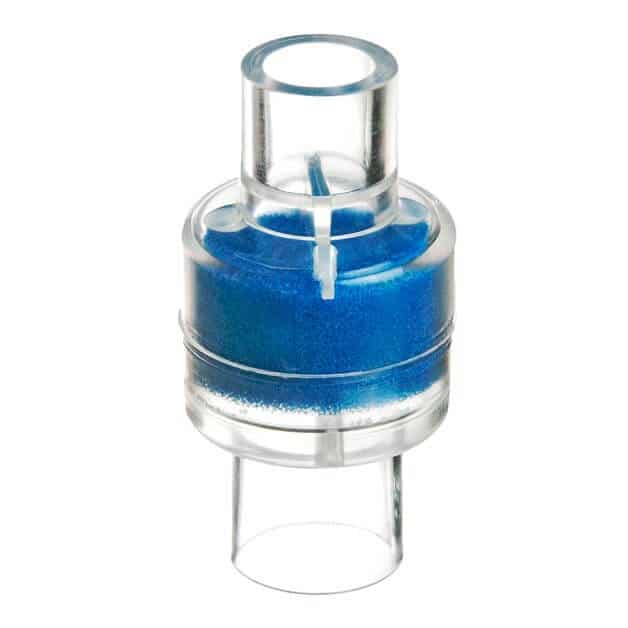
The Breas Z2 Auto, on the other hand, uses the Universal Z1/Z2 HME which is compatible with all CPAP masks. This universal HME connects to your CPAP mask on one end and any standard non-heated CPAP hose on the other.
Mask Compatibility
Like all other CPAP machines on the market, the Breas Z2 Auto is compatible with all CPAP masks. The AirMini, however, is a whole different story.
ResMed designed the AirMini to only work with AirMini specific masks. Luckily, these AirMini masks include nasal pillows, nasal and full face styles, so there is a mask for everyone. For the complete list of AirMini specific ResMed masks, check out our AirMini In-Depth Review.
Now, there is a way to use any mask with the AirMini, thanks to ingenious third party manufacturers. However, if you go with this setup, you cannot use the HumidX/HumidX Plus HME capsules. If you want to add humidification, you’ll need to use a generic HME such as the Z1/Z2 Universal HME.
To use any CPAP mask with the AirMini, you’ll need an AirMini Tubing Connector Adapter and a non-heated CPAP hose. The AirMini adapter lets you connect any non-heated tubing to the device so you can use your favorite mask with the AirMini.
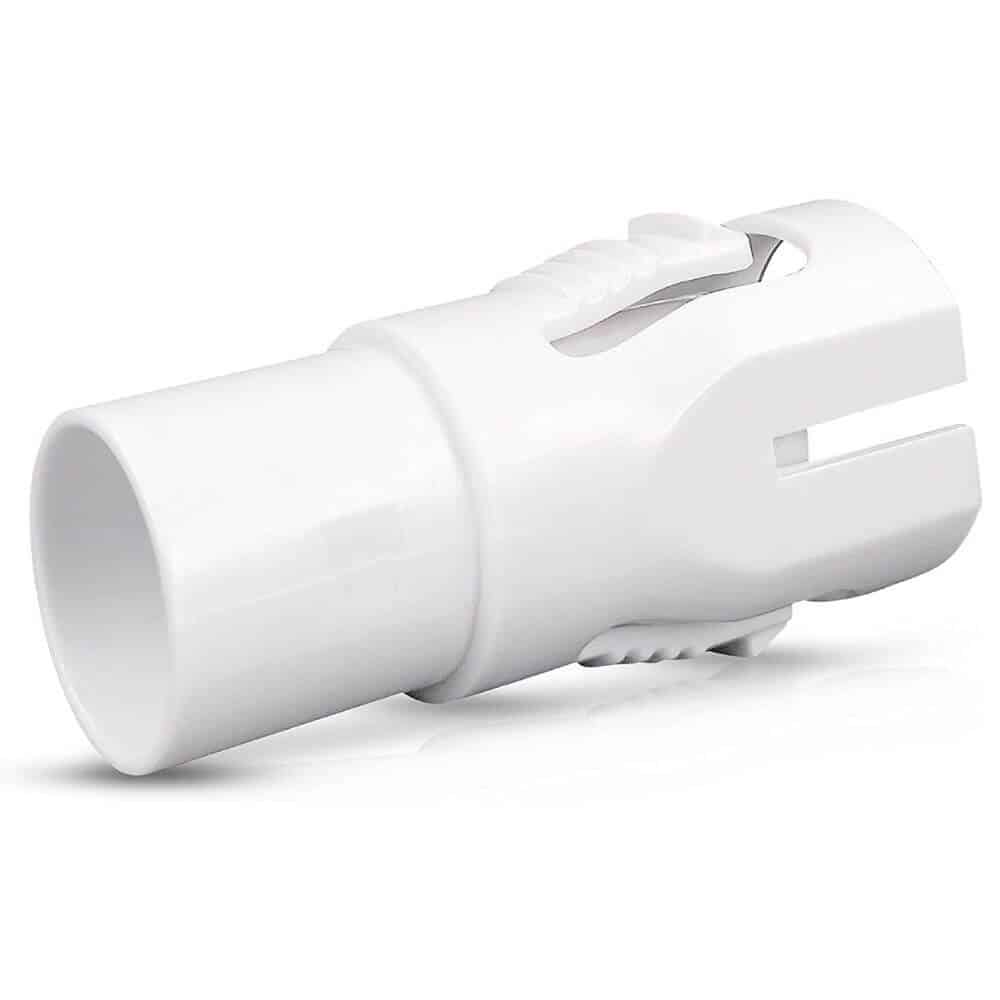
Data Access and Compliance Reporting
Aside from mask compatibility, another major difference between the Z2 Auto and the AirMini is data access and the ability to generate compliance reports. Z2 Auto users can access their sleep data and generate compliance reports via the Nitelog app or the Breas DataViewer PC software. Note that the software is only compatible with Windows.
AirMini users, unfortunately, can only access their sleep data via the AirMini app. The AirMini doesn’t support an external storage device (e.g., SD card) or have a USB port for data transmission. This means there is no way to pull data from the machine. If you want to view your sleep data, you must use the AirMini app.
What about CPAP compliance reports? Although you can view your CPAP AHI, machine usage and mask seal on the app, you can’t use it to generate a compliance report. You need another program, called AirView, to generate CPAP compliance reports and only your CPAP supplier or doctor can access AirView.
However, it’s worth noting that not all CPAP suppliers have access to AirView. Some online CPAP stores only sell equipment and do not provide any data access service. If you’re in need of a compliance report for insurance, your DOT or FAA physical, RespShop can help. Our Remote Data Downloading Service provides you with a pdf CPAP compliance report sent straight to your email. We can generate a compliance report for you regardless of where you bought your AirMini.
The Takeaway: AirMini vs Breas Z2 Auto
Both the ResMed AirMini and Breas Z2 Auto are feature-rich auto travel CPAPs that rival full-size machines. They offer auto CPAP and CPAP modes, optional waterless humidification and comfort features such as ramp, exhalation pressure relief and auto start/stop. Both are also compatible with multiple CPAP batteries, although only the Z2 Auto has an integrated battery that’s sold separately.
Whether you choose the ResMed AirMini or Z2 Auto really comes down to two factors:
- How comfortable are you with technology?
- Do you want to access your detailed sleep data independently?
If you enjoy the latest technology and don’t find adjusting settings via an app inconvenient, the AirMini is likely more appealing. Its mask and humidification setup is more complicated than the Breas Z2 Auto, but its design is much more modern. The AirMini app is user-friendly, with the only downside being its inability to generate compliance reports.
That said, if the ability to access detailed sleep data without relying on a provider is very important to you, then the Breas Z2 Auto is the better choice. With the AirMini, you need a provider to access your compliance report. There is no workaround.
If you have questions about either travel CPAP, feel free to get in touch with the RespShop team using one of the methods below!

